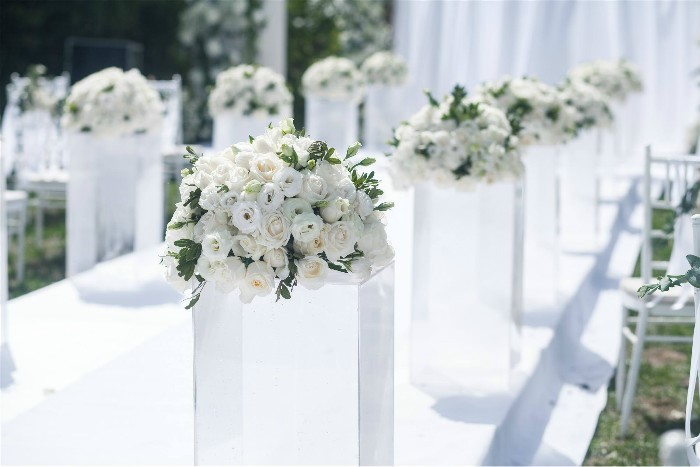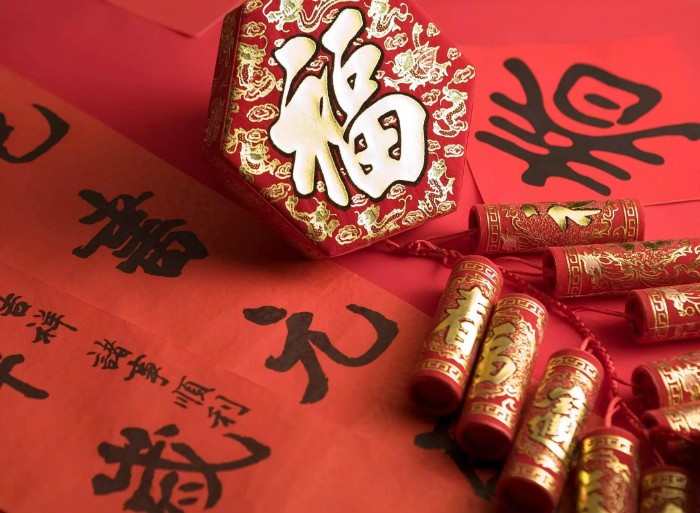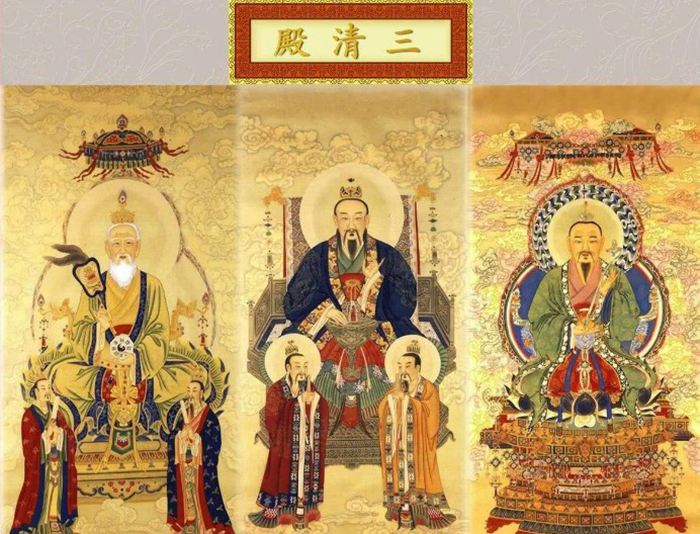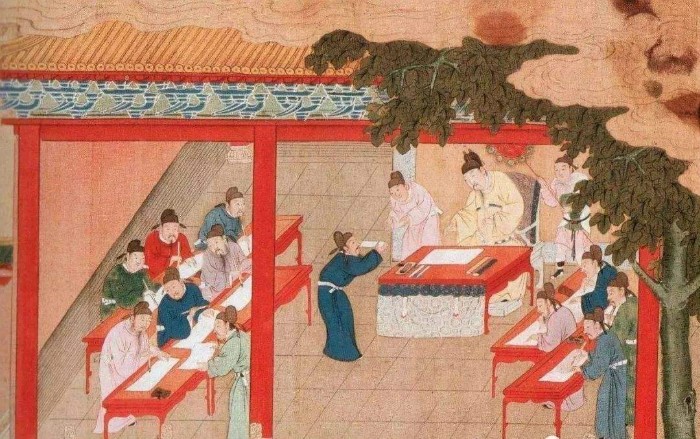Dadonghai beach is one of the cleanest beaches in sanya, just 3km from the city centre, Read More
Chinese Technologies Introduced into the West via Silk Road
Cultural exchanges between China and the west are mutually beneficial and make common progress. China’s four great inventions (papermaking, printing, gunpowder, and the compass), as well as sericulture and silk-making, spread to the west. This greatly accelerated the development of the whole world.
In addition to fine Chinese goods, many advanced Chinese technologies were exported to the west, such as silkworm production, silk weaving, papermaking, movable type printing and gunpowder.

During the han dynasty (206bc-220ad), China monopolized the silk trade by keeping production techniques secret. A han princess smuggled silkworms and seedlings and skilled workers into yutian (now hetian). It was not until the 12th century that the technique spread to Western Europe.
In 750 AD, a war broke out between the tang dynasty (618-907) and the Arab empire at bishkek, and the tang army was defeated. As a result, the arabs brought Chinese captives to samarkand along the silk road. Among them were paper workers.
Printing was introduced to central Asia during the tang dynasty. In the 13th century, many europeans came to China via the silk road and brought printing back to Europe. In 1444, German inventor Gutenberg used a similar printing technique to print the bible.
In the early 13th century, Mongol tribes used gunpowder in their westward campaigns to eliminate resistance to them. It was the equivalent of a weapon of mass destruction.
What’s more, karez technology was introduced into western China during the han dynasty. The han troops stationed in the western regions used this technique to store water in desolate conditions. From The Three Kingdoms (220-280) to the tang dynasty (618-907), western and central Asian music, dance, acrobatics and art were introduced to China. The Persian kung fu (23-stringed) and pipa joined the ranks of traditional Chinese instruments during the han dynasty (206bc-220ad).
Material and cultural exchanges are also taking place on this long trade road. Western products such as grapes, clover, walnuts, carrots, peppers, beans, spinach, cucumbers, pomegranates, rare animals, medicinal herbs, condiments and jewelry have poured into China. Chinese porcelain and lacquerware also spread to the west.
WHITE and BLACK in Chinese, Weddings and Funerals
WHITE has certain similar connotations in both languages: purity, innocence. Such as the bride will wear white wedding in the marriage gauze, represents the purity of love. But there are differences. For example, in English there are white lies that refer to trivial, harmless, or well-intentioned untruths. In Chinese we have a lot of terms containing the color white. The following are just a few of them that may be confusing when we attempt to express them in English. One is 红白喜事.its proper translation would be” weddings and funerals”. This is because white is the traditional color for brides at western weddings.To have white at funerals would be offensive; and to have funerals described as happy occasions would be absolutely shocking to westerners, although the expression reflects a certain philosophic attitude of the Chinese towards death.

Black in two languages of the Chinese cultural meaning is roughly same, such as saddened, sinister and the meaning of evil. Besides, BLACK implies gloom, disgrace, misfortune, extreme anger. However, in business English, in the black has a good meaning. it means running a business profitably. In English and Chinese it is a perceptual color very strong affix.
We through the above study to understand the color in different cultures sometimes have different meanings, and sometimes even show the opposite meaning. For example, black is the color of mourning;red symbolizes danger,violence,or bloodshed; if you are afraid of something, you are yellow. But none of these sayings is true outside the English-speaking world. In china and other eastern Asian countries white is the color of mourning. In Russia red stands for beauty and life. In Italy and Germany you are yellow with anger, not with fear. So we need to study it, in order to avoid misunderstanding.
The RED in Chinese, Auspicious and Festival Happiness
RED in Chinese often have “auspicious, festival happiness” meaning, but in The eyes of The English country, red sometimes means bleeding, violence or dangerous, so David Hawks in translating “A dream of red chamber” is to avoid The book title is The “red”, and The original novel ever use The title of The Story of stone “, processing is The Story of The Stone, and “悼红轩”was translated into The Nostalgia Studio,”怡红院”into The House of Green Delights, in order to avoid cultural differences can cause misunderstandings.

RED is usually associated with celebrations and joyful occasions in both cultures. so in English we find, for example,” to paint the town red ”means to celebrate, to go out to drink and have a good time. Red-letter days—holidays such as Christmas and other special days.” roll out the red carpet for someone” means to give a lavish welcome.
RED is also the color associated with revolution and socialism (革命和社会主义).
However, in English RED also have some negative connotations. Sometimes Red symbolizes danger, violence, or bloodshed. Some Westerners take RED as an evil omen or RED for danger, stemming from the spirits of bullfighters (斗牛士).RED further develops to be the synonym for political radical. Furthermore, RED has some extended meanings, such as cruelty, disaster, trivial formalities. For example, the thief was caught red-handed. Other examples are “get or go into the red(be in debt)”,”see red(lose control of oneself through anger, or indignation)”,”have red hands(commit a murder)”,”red-light district(a part of a town where one can hire prostitutes, so the modern Chinese Beijing opera The Red Lantern Story was often misunderstood by native English speakers)”,”red tape(unnecessary and over elaborate formalities)”,”a red battle(a cruel war)”.
The Difference Between Chinese and Western Religious Culture
The history of human development, because of the different geographical, cultural, political and economic patterns are different from. Of course, cultural differences also include religion as a cultural difference. Specific performance in three aspects.

First: the origin of Chinese and Western religions are different.
Oriental religious culture is in at that time the nobles of the jealous Shemi the pursuit of material desires expansion; the Western religious culture, on the contrary, he is in the bloody political struggle, people in the spirit of sustenance, the faith.
Second: the religious beliefs of the East and West are different.
In China, religion has a large part of people’s desire for material.
The west, no matter what religion, people’s beliefs are spiritual. Will not pray for material prosperity, the pursuit of spiritual liberation.
Pure faith and non pure faith are the essential differences between the eastern and Western religions.
Third: the differences between Chinese and Western religious and political relations.
The history of the development of religions in the East and the west, we can clearly separate: strong political color of the religions of the East, indelible, in modern still exist; Westerners of the spirit of God is not politics.
Eastern and Western religious differences, there are a lot of differences, for example, religious elements, function, teaching, characteristics and so on, existed more or less difference, I believe with the development of society, the religious exchanges will continue to strengthen mutual integration of different religions, take the essence, common development. At the same time, because of differences in political, economic, cultural, geographical, religious in many aspects is still not the same. In the history of western culture, although there are tens of thousands of religious differences, religious culture still is immortal, has a long history.
The Cultural Meaning of Animals in Chinese
The same animal word has very different commendatory and derogatory meanings in Chinese and English. The same animal word in English means a positive meaning, but in Chinese it means a negative meaning, such as dog, owl and bear.
A friendly dog and a disgusting dog. In English and Chinese, the basic meaning of dog is the same. Both of them mean a domesticated animal that has four legs and can help to guard the house. However, the cultural connotation is very different. Dog is a commendatory word in most situations in English, which can be used to describe someone who is worthy of sympathy and trust, such as help a dog over a still, a lucky dog, an o ld dog, love m e, love m y dog. Apparently, these sayings reflect the cultural psychology of the British, who regard dogs as loving companions and man’s best friend. But in the Chinese culture, the dog is repeatedly reviled things, representing despicable abominable character. Words with dog characters are obviously derogatory, such as running dogs, wolves, friends, bereaved dogs, dog guard, dog bite and so on.

Wise owl and ominous owl. In English, owl is a kind of smart and witty bird, so it has cultural connotations such as “smart as an owl”. But in the eyes of the Chinese people, it is considered to be a bad thing because of its sad cry at night. When people hear an owl hooting, they think that bad luck or bad luck is coming. Hence the saying, “when an owl enters a house, good things come to an end.”
Bear the genius and the bear. Bears have very different meanings in the minds of Chinese and British people. In spoken English bear can be used to describe someone who has a special talent, such as He is a bear at maths. But when Chinese people talk about bears, they often think of such cultural connotations as “weak and incompetent”, such as “look at him like a bear” and “real bear”.
(2) the same animal word has a derogatory meaning in English, but in Chinese it has a commendatory meaning, such as peacock, bat, petrel, magpie, fish and so on.
The proud and arrogant peacock and the auspicious and beautiful peacock. Because of the different aesthetic perspectives of English and Chinese people, the same animal often has different associations in their minds. The British are as proud as a peacock and play the peacock. The han people pay attention to the beauty of her screen, and the peacock is a symbol of auspicious beauty in Chinese culture.
The evil bat and the lucky bat. Westerners are always afraid of bat. Bat is disgusting, which is associated with ugliness and evil. Therefore, all idioms with bat in English have derogatory meanings. For example, as blind as a bat, bat has become a typical image. In traditional Chinese culture, bats have become mascots because the characters “bat” and “fu” sound the same.
Petrel and the brave petrel. The British pet rel as those who bring disaster, disputes, longman dictionary of contemporary English and Chinese double solution will pet rel definition for “A stormy petrel is A person whose presence excites discontentment, quarrelling, etc., in A social group.”, thus its. In the eyes of the Chinese people, haiyan is an indomitable, fearless, brave hero, is a model for people to learn. The song of haiyan, written by gorky, a famous writer in the former Soviet union, is a tribute to the resolute and brave spirit of haiyan.
The repulsive magpie and the propitious magpie. In English, magpie is used to describe someone who is a nag. In China, the magpie is regarded as an “auspicious bird”, which is associated with happy events, auspiciousness and luck. People often say: “magpie call, the event to the magpie,” magpie door is a happy thing.
Poor fish and fish that bring wealth. The cultural connotations of fish and fish are quite different from each other in Chinese and English culture. In English, fish is used to describe bad people and things, such as a poor fish, a loose fish, or fish in the air. Fish is a homonym for “yu” in Chinese. It is said that even in mountainous areas where there are no fish, people carve fish shapes out of wood and put them on the table to express the good hope of having more (fish) every year. Unique social customs give fish a rich cultural color.
The Chinese View of Privacy, Different from the Western
Chinese people always dislike “privacy”, individual rights are often regarded as selfish interests, and Chinese people have little concept of privacy, so there is no word in Chinese that can be equated with “privacy” in English. Thus, it can be seen that Chinese and western cultures treat “privacy” differences. Chinese people are warm and hospitable by nature. In interpersonal communication, they are full of enthusiasm. You take it for granted that you know someone’s age, occupation, income, marital status, children, etc. We’ve all had the experience of going on a trip and the neighbors asking, “have you eaten yet?” “And” where are you going?” “” to do what? . We are used to these greetings, but in the eyes of westerners, such greetings are impolite and will feel very offensive. Because in their perception, such “greetings” have violated their privacy. Chinese people also do not have a strong sense of boundaries. As children, they do not think that parents’ unauthorized entry into their own room is an invasion of personal privacy.

From the above analysis, we can see that there are considerable differences between Chinese and western attitudes to privacy. The root of these differences is the cultural difference between China and the west. First, in the west, individualism is at the core of western values. That kind of individualistic value is centered on the individual, and the individual’s behavior is completely based on his own inner feelings and motives, which opposes the strangling of personality and the violation of the individual. It can be said that the emergence and development of western individualistic values is the result of the continuous accumulation and inheritance of the core values of western culture, as well as the continuous enrichment and deepening of the western understanding of human nature. Second, collectivism is the core of Chinese values. Collectivism emphasizes the individual’s obligation and responsibility to the collective and the supremacy of collective interests. In the relationship between the individual and the state, it is manifested as the supremacy of national interests; In the collective family, it is shown as the attachment and obedience to the family. For the benefit of the group, when necessary, individuals need to suppress or even sacrifice themselves. Under the long-term influence of the collective concept, Chinese people’s concept of privacy is naturally different from that of westerners.
Imperial Examination in Sui & Tang Dynasties
The imperial examination system became a way for talents to be recognized and selected for future civil service positions. It was implemented in the sui dynasty and lasted for more than 1,300 years until the last examination in the qing dynasty. Therefore, it occupies a long-term dominant position in the history of ancient Chinese education.

The imperial examination consisted of two parts, the art examination and the martial arts examination. The examination of fine arts includes composition, books, law, calligraphy, painting, etc. The examination of martial arts is to select military officials, but it is not as important as the examination of fine arts.
In ancient societies, class consciousness was so strong that many of the lower classes had little chance of rising to high positions, let alone positions in the imperial court. But since the introduction of the “imperial examination” evaluation system, children from poor families have been given the chance to take government exams, enabling them to bring honor to their families. In addition, there was a special test for bright children, “child sentences,” which in many ways resembled today’s special classes for gifted children. Therefore, almost all men, regardless of birth or age, are entitled to self-development.
While the spread of Confucian culture and education had a huge impact, it also influenced the educational systems of many other countries, such as South Korea, Japan and Vietnam. Today’s education system is its undisputed successor.
During the Sui dynasty, many independent countries were unified as one. To centralize power, the emperor realized the need for a strong, well-educated administration, one that would employ the best people in the country. In order to achieve this goal, the most influential institutions came into being, and replaced the previous old system – the middle of the nine. Although it is immature from the very beginning, it closely interweaves the three elements of study, examination and management. It has proved fairer and more far-reaching than any previous system.
Face in Chinese Culture, Another Form of Fame
Face concept has a very long history in China, under the influence of traditional culture, people in China with regard to its face problems often produce a large comprehension, many people think that face is their dignity, is like your face, it is not allow anyone to hurt, and strangers in the process of communication, Chinese people think about their face others respect, is respect for themselves. Face this concept also has certain collective consciousness, is likely to emphasize as a whole, such as the “face” of a country, a group of “face”, etc., in general, on the face culture in our country is very seriously, either in life or work process, attaches great importance to others’ ideas, and also will often find that the maintenance of face. Like Chinese anthropologists Hu Xian jin in the introduction of the “face” culture to the westerners, she once said: “the face of this culture represents the reputation of a kind of social value, it is through continued success in life and move onward to gain reputation, is also a personal pass through its own efforts to accumulated reputation.”

Our social collective idea is an important factor of “face” and the western cultural differences, our country is self-sufficient smallholder economy in before, at that time people in life that is mostly a family in the process of the concept of the family in this way of life and the environment, our people for the interests of the collective importance will be significantly higher than the personal interests, for a long time, under the background of The Times development, our people will stake in protecting themselves face and face. In addition, influenced by Confucianism, Chinese people think that respected let a person feel very face, is a “gentleman”, and “little people” will abandon, by the people under this kind of social ideology, people want to be a gentleman, not a, so, either in life or work will win respect for oneself, not to “lose face”, because “losing face” is a great thing.
Chinese Traditional Education, the Exam-oriented Education
Compared with Chinese and western students, Chinese students learn more but have less understanding, while western students learn less but have more understanding. Most of the Chinese students show a solid foundation, ideological attachment, only from the teacher, only from the book, lack of innovative spirit of the general phenomenon; Most students in the west show that they dare to think, dare to do and are full of competition. As is known to all, for thousands of years, Chinese education has a remarkable feature, that is, pay attention to the foundation, pay attention to the basic education. But unfortunately, too much emphasis is placed on “basics,” “learning from the basics that are not needed by everyone as the basics that are needed by everyone.” The primary education adopted by Chinese education lays the foundation, attaches great importance to basic knowledge, attaches great importance to inculcate knowledge to students, and emphasizes the inheritance and mastery of previous knowledge. Only in the advanced stage of learning, to the university began to learn to do research, and at this time, because the creative consciousness, creative ability has not been cultivated since childhood, lack of creativity, no wonder “less awareness”. However, western education focuses on the consistent cultivation of creative consciousness and creative ability and ignores the imparting of basic education knowledge. The foundation is not solid, “learn little”, but the west pays attention to children’s imagination, creativity inspiration, pay attention to non-intellectual factors or personality training, “understand much”.

Compared with the western education, Chinese education attaches importance to the commonality but ignores the cultivation of individuality. In China, Chinese teachers believe that good classroom discipline requires students to be orderly and keep quiet. Chinese children see sitting upright as a sign of respect for their teachers, while western children see sitting upright as a way to communicate better with their teachers. Indeed, in a relaxed and free educational atmosphere, students feel, dare to say and do, their personalities develop freely, their talents are fully displayed, and their creativity is cultivated. However, whether in class or after class, Chinese students spend their time in the infinite care of teachers and parents and in a variety of designed homework. It is this kind of care that makes children lose their individuality, limit their free space, block their free dreams, and suppress their imagination and creativity.
Traditional Chinese education emphasizes the imparting of knowledge, while western education emphasizes the cultivation of students’ ability. The two need to communicate and complement each other. Therefore, we should learn from western school education to give them broad space for thinking and encourage them to think independently, question boldly and explore bravely.